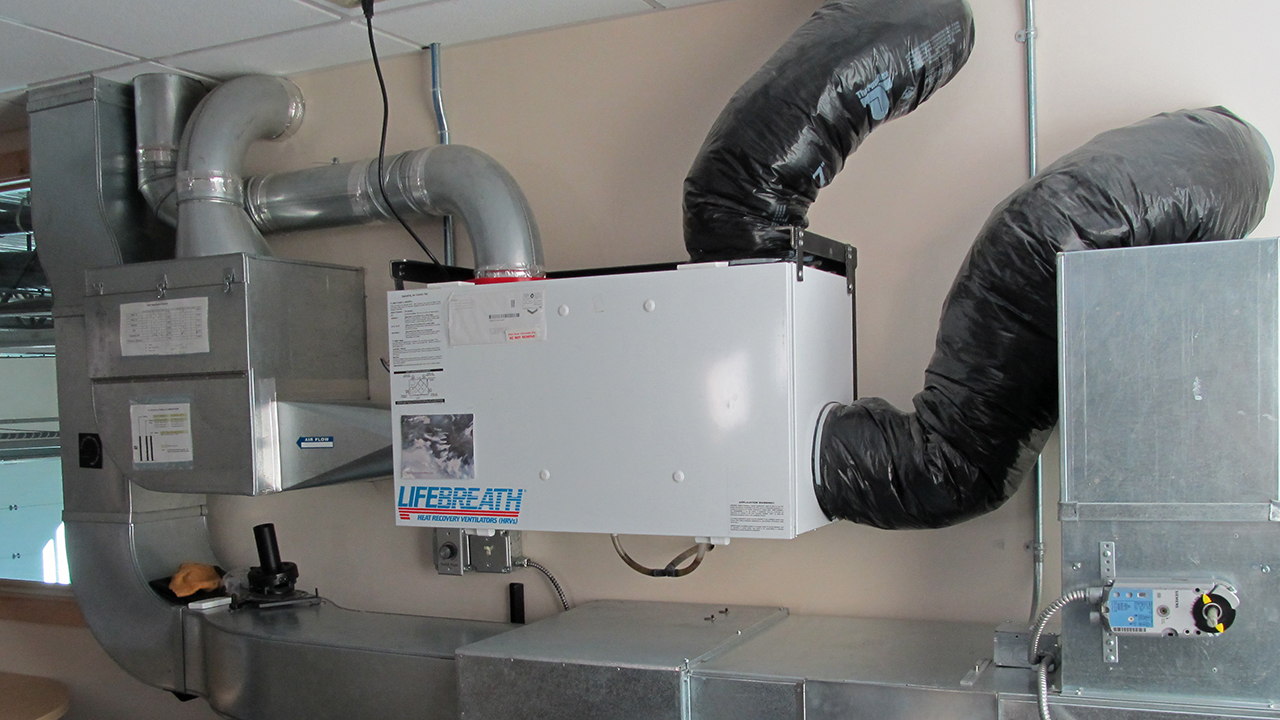Exactly How Heat Recovery Ventilation Improves Indoor Air Quality and Reduces Power Prices
Heat Recovery Ventilation (HRV) systems play an essential function in enhancing indoor air high quality while simultaneously decreasing energy expenditures. By successfully trading stale interior air with fresh exterior air, HRVs assist maintain excellent humidity and lower contaminants. Additionally, their capacity to recoup warmth from outgoing air lessens the strain on heating and cooling down systems. As energy prices remain to rise, understanding the full possibility of HRV systems becomes progressively crucial for homeowners and companies alike.
Understanding Heat Recovery Ventilation Systems

Heat recovery ventilation (HRV) systems play a necessary role in enhancing interior air top quality, particularly in modern, energy-efficient buildings. These systems are made to move warm from the outgoing stale air to the incoming fresh air, consequently decreasing energy loss while maintaining ideal temperature level levels inside. HRVs contain a warm exchanger, followers, and ductwork, promoting the continual circulation of air. By removing interior pollutants and presenting fresh air, HRVs aid to balance humidity levels, prevent mold and mildew development, and lower allergens. The performance of HRV systems hinges on their capacity to recuperate up to 80% of the warmth from the exhausted air, promoting energy preservation while making sure a healthy interior setting. Their integration is vital in achieving sustainable living methods.
The Value of Indoor Air Top Quality
Indoor air quality (IAQ) is an important factor affecting the wellness and wellness of passengers in any kind of atmosphere. Poor IAQ can cause different health problems, consisting of respiratory system problems, allergic reactions, and fatigue. Additionally, it can worsen status quo such as asthma. Factors contributing to reduced IAQ consist of toxins from indoor resources like cleaning up representatives, mold, and poor air flow. Maintaining great IAQ is important for advertising a risk-free and comfortable living or working space. Reliable approaches to enhance IAQ include regular tracking of air quality, appropriate ventilation systems, and reducing using unsafe substances inside. By prioritizing IAQ, people can guarantee a much healthier atmosphere that promotes performance and total lifestyle.
Energy Performance Benefits of HRV Solutions
Several house owners and structure managers are progressively recognizing the energy effectiveness benefits of warm recuperation ventilation (HRV) systems. By transferring warm from worn down indoor air to incoming fresh air, HRV systems considerably minimize the power needed for cooling and heating. This procedure minimizes dependence on conventional heating and cooling systems, resulting in reduced energy expenses. In addition, HRVs aid preserve a well balanced interior climate, protecting against extreme home heating or cooling needs. The capacity to recover as much as 90% of the warm from outbound air also sustains sustainability initiatives by lowering general power usage. Subsequently, HRV systems contribute not just to set you back financial savings however additionally to a reduced carbon footprint, lining up with the expanding focus on energy-efficient structure techniques.
Installment and Upkeep Considerations
The reliable implementation of heat healing air flow (HRV) systems requires mindful factor to consider of installation and maintenance aspects to guarantee peak efficiency. Proper positioning of the HRV system is find this important, as it needs to be mounted in a location that maximizes airflow while reducing sound interruption. Furthermore, ductwork has to be appropriately sized and protected to stop energy loss. Regular upkeep, consisting of filter replacement and system cleaning, is crucial to safeguard optimum capability you can find out more and indoor air quality. Owners must develop a normal upkeep schedule to identify and address potential issues before they escalate. Cooperation with seasoned specialists throughout both installment and upkeep stages can boost the long life and efficiency of HRV systems, inevitably resulting in far better interior atmospheres and lowered power expenses.
Real-World Applications and Success Stories
Exploring real-world applications of heat recuperation air flow (HRV) systems exposes their significant effect on interior air top quality and power effectiveness throughout different settings. In residential buildings, home owners have reported better air top quality, causing less allergies and respiratory system concerns. Schools carrying out HRV systems have actually kept in mind improved student concentration and minimized absenteeism due to far better air flow. Commercial structures, such as workplaces and retail spaces, have experienced reduced energy prices and increased staff member productivity. A news company workplace in a pleasant environment accomplished a 30% decrease in energy bills after installing an HRV system. These success stories show that HRV technology not just contributes to healthier atmospheres but also supplies tangible monetary advantages, making it an important financial investment for different industries.
Regularly Asked Concerns
Can HRV Solutions Reduce Allergens in Indoor Air?
The performance of HRV systems in decreasing indoor irritants primarily depends upon their ability to filter and exchange air. HRV Heat Recovery Ventilation. By constantly changing stale air, these systems can greatly reduce irritant degrees throughout indoor environments

Just How Does Humidity Affect HRV System Efficiency?
Moisture greatly affects HRV system performance; high degrees can cause condensation, lowering efficiency, while reduced humidity may enhance air exchange. Balancing moisture is important for ideal procedure and maintaining indoor air high quality.
Are HRV Systems Noisy Throughout Procedure?
HRV systems can produce varying sound degrees during operation, depending upon their design and installation. Some units operate silently, while others may produce noticeable noise, specifically at greater airflow setups or when poorly kept.
What Is the Average Lifespan of an HRV System?

Can HRV Solutions Be Made Use Of in All Climates?
HRV systems can be made use of in various climates, yet their effectiveness might differ - HRV Heat Recovery Ventilation. In extreme temperature levels, adjustments or additional systems may be necessary to guarantee perfect efficiency and convenience while keeping indoor air high quality